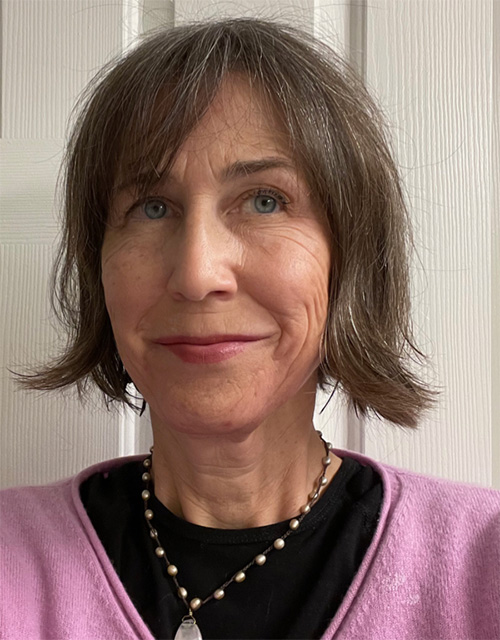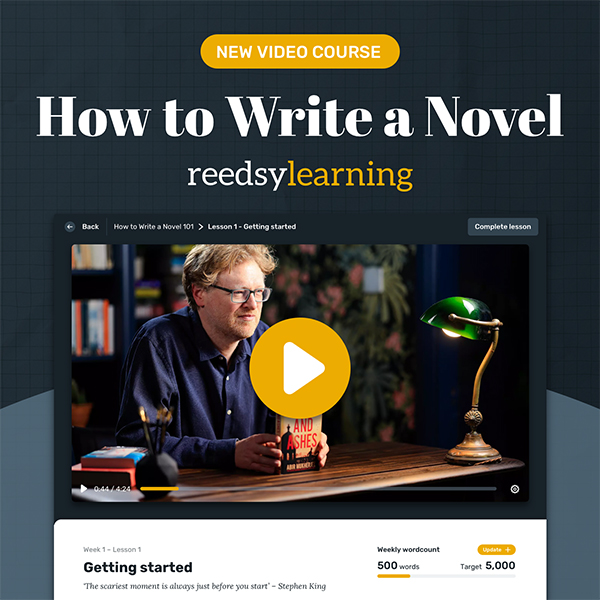Interview with Shama Shams - WOW! Q2 Creative Nonfiction Essay Runner Up
Webb Writing Challenge
Instead of a reading challenge, I’m offering you a writing challenge. A list of writing suggestions and a year to complete 12 of them – one a month or all twelve in one month, whatever strikes your fancy. You can even do all 15! Don’t restrict yourself – if the challenge doesn’t specify, try fiction, nonfiction, memoir, essays, children’s, poetry. So, in the next year, whenever you’re feeling uninspired pull up this writing challenge and give one a try.
Let’s not tackle this writing challenge as a solitary endeavor. Feel free to share how you’re doing with the writing challenge in my future Muffin posts or on my blog Words by Webb. Did the writing challenge lead you to a new type of writing, publication, or maybe an idea for a longer piece? Let's begin the Webb Writing Challenge!
1. Write a poem. Rhyming not necessary. If poetry is a challenge for you, try a haiku.
2. Use your name as a writing prompt. My surname is Webb so I could write about spiderwebs, spiders, Spiderman or even weaving (webb means weaver). How about you?
3. Pen a flash fiction(1000 words or less) in a genre you don’t usually write.
4. Find inspiration in a favorite song – either the lyrics or memories connected to the song.
5. Everyone loves a surprise ending. Write something with a twist.
6. Try some epistolary writing – tell a story through other writing (letters, texts, emails, diary entries, police blotter, etc.)
7. Learn something new and use it in your writing. What plants are poisonous? Who created the first hot air balloon? How do you juggle? Here’s your chance to learn something you’ve always been curious about and use it to enrich your writing.
8. Write about a place you’ve never been – an actual place or an imaginary world you create.
9. Create a random question (or use a question generator) then answer it with a piece of writing. When did things go wrong? Why did she come to town? What happened to the missing shoe? The crazier the better.
10. Condense the time period of your piece – have it happen in 24 hours or less.
11. Be someone new! Write from a viewpoint different from yours – different age, gender, religion, politics, financial situation, time period, profession, etc.
12. Choose another piece of writing as your jumping off point, anything from a novel to a news story to a birthday card from your Aunt Marion.
13. Berkley researchers pinpointed 27 emotions: admiration, adoration, aesthetic appreciation, amusement, anger, anxiety, awe, awkwardness, boredom, calmness, confusion, craving, disgust, empathic pain, entrancement, excitement, fear, horror, interest, joy, nostalgia, relief, romance, sadness, satisfaction, sexual desire, surprise. Focus on one in your next writing.
14. Allow the next person you eat a meal with to suggest a writing topic.
15. Infuse an inherently unlikable character with traits that make your readers root for them.
Have fun and don't forget to let all your fellow writers know how you're doing with the challenge!
Interview with Betsy Andrews Etchart: 2025 Q2 Essay Contest Runner Up
Interview with Mihaela Stoicovici, WOW! Winter 2025 Flash Fiction Contest First Place Winner
--interview by Marcia Peterson
WOW: Congratulations on winning first place in our Winter 2025 Flash Fiction competition. What prompted you to enter the contest?
Mihaela: I don't think I could give advice to anyone when it comes to writing, I'm a beginner myself. What I like doing and it works for me is to start with a feeling, connected to what happened in real life or to something I read. And then I follow that feeling, I give it space and I listen to it. Sometimes it's a dream I have at night, I like to pay attention to the dreams, it's amazing how they can have a language of their own.
WOW: You mentioned that you discovered your passion for creative writing quite recently. What’s next for you on writing journey?
Mihaela: I want to have more discipline, write more and finish the stories I think about. I bought some books on creative writing and I plan to study more about technicals and the inner workings of writing.
Mihaela: I like how little, apparently ordinary daily things can have a deeper meaning than I initially thought. When I find that magic thread behind a small thing, that's when I feel I can write a story about it.
Interview with Brigid Boettler, Runner Up in the WOW! 2025 Q2 CNF Essay Contest
What if a Favorite Work is in the Public Domain?
 |
| The Dover cover. |
Only the first book is in the public domain but I quickly pulled out my copy. Do I have the 1924 title? No. I have the 1942 book, but I want to see how different the original is. Fortunately it has been reissued by Dover.
Beyond reading both versions, what can I do? I wasn’t sure so I did a bit of research.
When a book is no longer under copyright, it is in the public domain. It can be reprinted, produced as an ebook, sold and adapted by you, me, or anyone else reading this post. You can even sell your new creation on Kindle. But it has to be differentiated which means that you have somehow made it different from the original.
There are several ways that you can, according to Kindle, go about this.
- Translation: If you are fluent enough to translate The Box-Car Children into another language, feel free to do so. You could even create a series with the book translated into Spanish, French, Mandarin, or Twi.
- Annotation: Not qualified to translate? You could also annotate the book. Annotations are any commentary or explanation added to the original text. Annotations could include historical information such as “At the time this book was published…” Or they could be biographical information about the author and how the book parallels the author’s life. Note: I don’t know that this is the case with The Box-Car Children. I simply used that as an example.
- Illustration: Are you a skilled illustrator? You can publish a Kindle book in which you have added at least 10 of your own illustrations to the original story. These could be photographs that you have taken, drawings, or digital artwork.
Do I plan to differentiate The Box-Car Children? I do not. But maybe just maybe I’ll differentiate something else. I am curious to see how Dover has made their publication unique.
--SueBE
- To find out more about her writing, visit her site and blog, One Writer's Journey.
- Click here to find her newsletter.
Interview with Wendy Fontaine, WOW! Q2 2025 Creative Nonfiction Contest Runner Up
Wendy: That moment in the parking lot has stuck with me for 35 years. Over the decades, I’ve wondered, why not me? Why do bad things happen to some people but not others? There are answers to that question and yet, at the same time, there are no answers to that question. This moment and many others, including 9-11 and the Boston Marathon bombing, make me think of how close we all come to tragedy every day, whether we know about it or not. And when we do know about it, we try to make sense of it. We try to give it a narrative or some kind of explanation, but of course there are times when no explanation can be made. We just “got lucky,” as they say.
WOW: How do you find or make time to write? What works best for you?
Writing with Your Five Senses
Sight. Hearing. Touch. Smell. Taste.
For years I’ve been told to use all five senses in my writing so the reader can feel more fully immersed in the reality of the world I’ve created. But, to be truthful, I’ve been leaning toward sight with the others occasionally making it into the rotation. But after writing an essay for a journal with the theme Noise, I’m rediscovering all the senses. So let’s talk adding senses to your writing.
Sight
Most of us will agree that this is the easiest one. Describe what you’re seeing in your mind’s eye when you imagine the scene. Because it’s so easy to write, I often use sight to give readers subtle clues. The brief glance between characters, a seemingly random object on the bookshelf that becomes important later, a gesture or habit that gives us a hint about a character’s personality. These more subtle uses of sight don’t often appear in the first draft. They have to be planned and added in subsequent drafts.
Hearing
Sound is something I often ignore as I bustle about my day. So, if I want to go beyond the vague crash, bang, slam in my writing, I really have to slow down and think about noises. Does my dishwasher hum or whirr or thump? What are the noises a house makes at night? Can I add modifiers to give a sound more meaning? Was the train whistle haunting or spirited? Can a recurring sound forewarn my reader that something important is about to happen?
Touch
Too often I think of touch as my fingers examining something. But our whole body is touching things constantly. Clothes, furniture, the ground, the wind, the sun, other people. It isn’t just what character’s feel but how they react to it. Does the borrowed flannel shirt feel awkward and stiff or cozy and warm? Does the gun feel like a familiar friend in their hand or do they recoil from the cold metal? Even a casual touch between characters can reveal something. It’s a great way to hint at emotions they are trying to hide. The tensed muscles of fear? The tight grip of anger?
Smell
Like hearing, smell is something I don’t often take time to label in my daily life. So when I want to add it to my writing it takes time and thought. What does the air before a thunderstorm smell like? Or a wet dog? (I’m thinking a weird mix of Fritos and rotten potatoes.) Also, I try to avoid the easy choices “flowery perfume” or “acrid smell of the burnt out house” that often make their way into first drafts. I try to choose original or unexpected smells to make a scene or character memorable.
Taste
If you have a food scene, hurray for you. Two characters sharing sweet watermelon suggests romance much more than bitter coffee dregs from the bottom of the pot. Of course, I guess it depends on your characters. Taste isn’t just about food. Characters can taste something in the wind or a kiss. For me, taste is the toughest sense to add to a scene. In fact, if anyone has suggestions I welcome them.
Unearthing True Crimes From the Archives
When I started my true crime podcast, Missing in the Carolinas, five years ago, I thought I would be focusing solely on missing persons cases in North and South Carolina. My creative muse had other ideas. Little did my muse know that scanning old newspaper archives would lead me to intriguing crimes from the past (many with no digital footprints) and inspire me to broaden the context of my storytelling.




.jpg)





.jpg)








